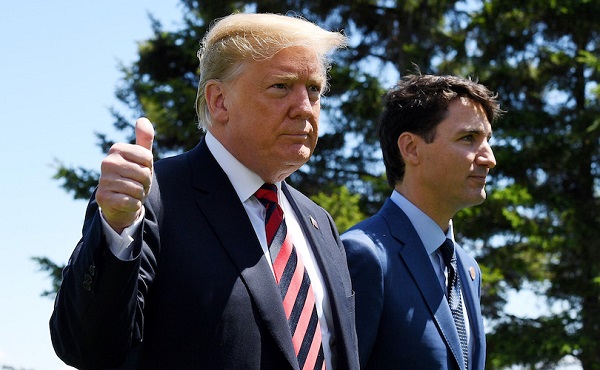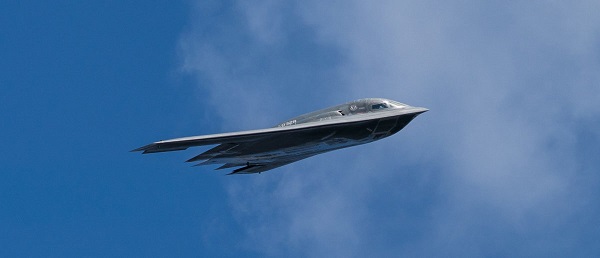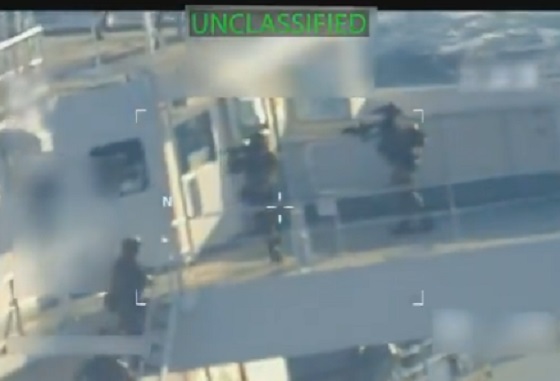armed forces
Canada is not a sovereign nation

Conspiracy Facts With Jeffrey Rath
There is no social service more important to the survival of a nation or a people than a robust national defence.
To quote the brilliant Lt. Col. (Ret.) David Redman, who has written extensively on the deplorable state of Canada’s ability to defend itself, quoting an anonymous Greek military philosopher,
“EVERY COUNTRY HAS AN ARMY, EITHER THEIR OWN OR SOME ONE ELSE’S”.
A more modern take on this thought was written by Niccolo Machiavelli in “THE PRINCE” when he observed that:
“THE FLORENTINES WERE EASILY CONQUERED BECAUSE THEY HAD BECOME WEAK AND EFFEMINATE FROM LONG PEACE.”
Machiavelli would be snickering if he knew that Canada has appointed a “Diversity, Equity and Inclusion General” to head the Canadian Armed Forces. Canada’s Chief of Defence Staff seems more concerned to ensure that tampons are available in the men’s infantry barracks than she was in insuring that Canada could defend itself or ever meet Canada’s NATO Article 5 obligations. Canada requires AT LEAST 3 divisions of air mobile combat soldiers, with suitable cyber security, surveillance and attack drones, armour, artillery, ground attack air cover, helicopter gunships, and air superiority interception capacity. A naval force capable of asserting arctic sovereignty while developing an amphibious assault capacity in support of our international obligations is also required. The 300-500 Billion Dollars that successive Canadian Governments have robbed from our NATO spending obligation would be a large down payment on rebuilding the Canadian Military while simultaneously wiping out the trade deficit with the US. An immediate 100 Billion Dollar military equipment order from US firms coupled with an elimination of all agricultural tariffs including the elimination of the Canadian Dairy Marketing Board would go a long way towards addressing President Trump’s justifiable derision of Canada’s status as a sovereign nation and good neighbour
Canadians need to internalize that they no longer live in a sovereign country. They live in a military protectorate of the United States Of America. Canadians currently underfund their NATO Treaty obligations by more than 23 Billion Dollars a year. This is a national disgrace.
Every so-called Canadian booing the American National Anthem, needs to be embarrassed, not outraged, over the fact that we have allowed successive Canadian Federal Governments to effectively embezzle hundreds of billions of dollars from the US through Canada’s despicable refusal to meet its national defence obligation to our largest and most economically important ally. In this sense Canada is much more like a vassal kingdom of Ancient Rome governed by a Governor appointed by Rome than a modern nation state. Despite Canada’s almost complete economic and military reliance on the United States, Canada is governed by minions of The World Economic Forum, The United Nations and the World Health Organization which are all China controlled or China adjacent entities that support Chinese global hegemony in the name of “globalism” or “post-nationalism”. Canada has even seen a former Chief Justice of the Supreme Court of Canada taking a Communist Party of China job as adjudicator in Hong Kong. Canada currently has a disgraced Prime Minister so stupid as to not understand why our NATO allies would be upset at Canada training the People’s Liberation Army on how to kill NATO soldiers more effectively in winter conditions at Canada’s special forces winter warfare training facility at Petawawa, Ontario.
Canadians are shocked and appalled when Americans have the temerity to elect a leader who rejects the prevailing pro-China governance of Canada. Trudeau’s contribution to US-Canada relations was to attribute President Trump’ s crushing victory over globalism and world socialism to a claim that he/she was a “feminist” and to equate the common-sense of Americans to racism and misogyny. The world is meant to believe that Canadians are horrified by a US President who insists as the military protector of Canada that Canada address its protectionism of Canadian markets, ongoing trade deficit and embezzlement of defence dollars from the US by refusing to meet Canada’s international defence obligations.
Mark “Carnival Huckster” Carney the new Liberal, wanna-be, Canadian Governor, has announced as part of his “leadership campaign” that unlike the outgoing Dictator Trudeau, he will only continue to embezzle billions of dollars a year for five more years to reach the 2% GDP NATO defence spending requirement, as opposed to the outgoing Governor Trudeau who thought he could continue to steal from the US for another 7 years. It’s like Mark “The Carney” thinks that President Trump will be gratified with his announcement that Canada will only continue stealing and freeloading off of America for 5 more years. Maybe as compensation President Trump should consider renaming “Lake Ontario” to “Lake America” given that Canada’s continued refusal to meaningfully contribute to its mutual defence with America, has at the very least given Trump “naming rights” over shared geographical features. How about instead of the St. Lawrence Seaway we now have “The Melania Seaway”. Canada’s lack of the basic sovereign function of self-defence should have consequences.
It’s time for Canadians to wake the hell up and realize that the so-called Laurentian elite Canadian political class undermine Canadian Sovereignty every day. They do this by refusing to acknowledge that President Trump is right to make fun of Canada for the emasculation of the Canadian military. President Trump is right to call out Canada’s ridiculous insistence on wanting free access to American Markets while continuing to protect Canadian millionaires and billionaires from US competition to the detriment of Canadian voters who would all benefit from the lower prices that tariff free trade would bring. Every Canadian should be angry that they pay way more than they should for milk, cheese and other products because of Canadian protectionism.
Come on Canada! Canadians are known internationally for the Canadian propensity to say sorry too often.
It’s time for Canada’s political leaders to say:
“President Trump, you are right. We are sorry. We will immediately change our childish, and dishonest behaviour. We will become a much better neighbour.”
Jeffrey R.W. Rath, B.A. (Hons.), LL.B. (Hons.)
Foothills, Alberta
February 18, 2025
P.S.
Failing the above, its time for Alberta to say “President Trump, we don’t want to be part of Canada as a 51st State. Alberta will happily consider the benefits of full statehood within the American Union on the condition that you don’t let Ontario, Quebec, British Columbia, or the Maritime province enjoy the same status given the extent to which they have enjoyed a parasitic relationship with Alberta for far too long.
Alberta will immediately commit to spending all dollars formerly sent to Quebec to the formation of an Alberta National Guard to be fully integrated with US Forces and chain of command, governed by the US Constitution. ”
This may be an idea whose time has come.
Subscribe to Conspiracy Facts With Jeffrey Rath.
For the full experience, upgrade your subscription.
armed forces
Ottawa’s Newly Released Defence Plan Crosses a Dangerous Line

From the Frontier Centre for Public Policy
By David Redman
Canada’s Defence Mobilization Plan blurs legal lines, endangers untrained civil servants, and bypasses provinces. The Plan raises serious questions about military overreach, readiness, and political motives behind rushed federal emergency planning.
The new defence plan looks simple on paper. The risks are anything but.
Canadians have grown used to bad news about the Canadian Armed Forces (CAF), but the newly revealed defence mobilization plan is in a category of its own.
After years of controversy over capability, morale, and leadership challenges, the military’s senior ranks now appear willing to back a plan that misunderstands emergency law, sidelines provincial authority, and proposes to place untrained civil servants in harm’s way.
The document is a Defence Mobilization Plan (DMP), normally an internal framework outlining how the military would expand or organize its forces in a major crisis.
The nine-page plan was dated May 30, 2025, but only reached public view when media outlets reported on it. One article reports that the plan would create a supplementary force made up of volunteer public servants from federal and provincial governments. Those who join this civil defence corps would face less restrictive age limits, lower fitness requirements, and only five days of training per year. In that time, volunteers would be expected to learn skills such as shooting, tactical movement, communicating, driving a truck, and flying a drone. They would receive medical coverage during training but not pensionable benefits.
The DMP was circulated to 20 senior commanders and admirals, including leaders at NORAD, NATO, special forces, and Cybercom. The lack of recorded objection can reasonably raise concerns about how thoroughly its implications were reviewed.
The legal context explains much of the reaction. The Emergencies Act places responsibility for public welfare and public order emergencies on the provinces and territories unless they request federal help. Emergency response is primarily a provincial role because provinces oversee policing, natural disaster management, and most front-line public services. Yet the DMP document seems to assume federal and military control in situations where the law does not allow it. That is a clear break from how the military is expected to operate.
The Emergency Management Act reinforces that civilian agencies lead domestic emergencies and the military is a force of last resort. Under the law, this means the CAF is deployed only after provincial and local systems have been exhausted or cannot respond. The Defence Mobilization Plan, however, presents the military as a routine responder, which does not match the legal structure that sets out federal and provincial roles.
Premiers have often turned to the military first during floods and fires, but those political habits do not remove the responsibility of senior military leaders to work within the law and respect their mandate.
Capacity is another issue. Combat-capable personnel take years to train, and the institution is already well below its authorized strength. Any task that diverts resources from readiness weakens national defence, yet the DMP proposes to assign the military new responsibilities and add a civilian component to meet them.
The suggestion that the military and its proposed civilian force should routinely respond to climate-related events is hard to square with the CAF’s defined role. It raises the question of whether this reflects policy misjudgment or an effort to apply military tools to problems that are normally handled by civilian systems.
The plan also treats hazards unrelated to warfighting as if the military is responsible for them. Every province and territory already has an emergency management organization that monitors hazards, coordinates responses and manages recovery. These systems use federal support when required, but the military becomes involved only when they are overwhelmed. If Canada wants to revive a 1950s-style civil defence model, major legislative changes would be needed. The document proceeds as if no such changes are required.
The DMP’s training assumptions deepen the concerns. Suggesting that tasks such as “shooting, moving, communicating, driving a truck and flying a drone” can be taught in a single five-day block does not reflect the standards of any modern military. These skills take time to learn and years to master.
The plan also appears aligned with the government’s desire to show quick progress toward NATO’s defence spending benchmark of two percent of GDP and eventually five percent. Its structure could allow civil servants’ pay and allowances to be counted toward defence spending.
Any civil servant who joins this proposed force would be placed in potentially hazardous situations with minimal training. For many Canadians, that level of risk will seem unreasonable.
The fact that the DMP circulated through senior military leadership without signs of resistance raises concerns about accountability at the highest levels. That the chief of the defence staff reconsidered the plan only after public criticism reinforces those concerns.
The Defence Mobilization Plan risks placing civil servants in danger through a structure that appears poorly conceived and operationally weak. The consequences for public trust and institutional credibility are becoming difficult to ignore.
David Redman had a distinguished military career before becoming the head of the Alberta Emergency Management Agency in 2004. He led the team in developing the 2005 Provincial Pandemic Influenza Plan. He retired in 2013. He writes here for the Frontier Centre for Public Policy.
armed forces
Global Military Industrial Complex Has Never Had It So Good, New Report Finds


From the Daily Caller News Foundation
The global war business scored record revenues in 2024 amid multiple protracted proxy conflicts across the world, according to a new industry analysis released on Monday.
The top 100 arms manufacturers in the world raked in $679 billion in revenue in 2024, up 5.9% from the year prior, according to a new Stockholm International Peace Research Institute (SIPRI) study. The figure marks the highest ever revenue for manufacturers recorded by SIPRI as the group credits major conflicts for supplying the large appetite for arms around the world.
“The rise in the total arms revenues of the Top 100 in 2024 was mostly due to overall increases in the arms revenues of companies based in Europe and the United States,” SIPRI said in their report. “There were year-on-year increases in all the geographical areas covered by the ranking apart from Asia and Oceania, which saw a slight decrease, largely as a result of a notable drop in the total arms revenues of Chinese companies.”
Notably, Chinese arms manufacturers saw a large drop in reported revenues, declining 10% from 2023 to 2024, according to SIPRI. Just off China’s shores, Japan’s arms industry saw the largest single year-over-year increase in revenue of all regions measured, jumping 40% from 2023 to 2024.
American companies dominate the top of the list, which measures individual companies’ revenue, with Lockheed Martin taking the top spot with $64,650,000,000 of arms revenue in 2024, according to the report. Raytheon Technologies, Northrop Grumman and BAE Systems follow shortly after in revenue,
The Czechoslovak Group recorded the single largest jump in year-on-year revenue from 2023 to 2024, increasing its haul by 193%, according to SIPRI. The increase is largely driven by their crucial role in supplying arms and ammunition to Ukraine.
The Pentagon contracted one of the group’s subsidiaries in August to build a new ammo plant in the U.S. to replenish artillery shell stockpiles drained by U.S. aid to Ukraine.
“In 2024 the growing demand for military equipment around the world, primarily linked to rising geopolitical tensions, accelerated the increase in total Top 100 arms revenues seen in 2023,” the report reads. “More than three quarters of companies in the Top 100 (77 companies) increased their arms revenues in 2024, with 42 reporting at least double-digit percentage growth.”
-

 Business2 days ago
Business2 days agoMajor tax changes in 2026: Report
-

 Daily Caller2 days ago
Daily Caller2 days agoChinese Billionaire Tried To Build US-Born Baby Empire As Overseas Elites Turn To American Surrogates
-

 Digital ID1 day ago
Digital ID1 day agoCanada releases new digital ID app for personal documents despite privacy concerns
-

 Energy1 day ago
Energy1 day agoCanada’s sudden rediscovery of energy ambition has been greeted with a familiar charge: hypocrisy
-

 Alberta2 days ago
Alberta2 days agoSchools should go back to basics to mitigate effects of AI
-

 Daily Caller2 days ago
Daily Caller2 days agoTwo states designate Muslim group as terrorist
-

 International2 days ago
International2 days agoRussia Now Open To Ukraine Joining EU, Officials Briefed On Peace Deal Say
-

 Censorship Industrial Complex2 days ago
Censorship Industrial Complex2 days agoDeath by a thousand clicks – government censorship of Canada’s internet










